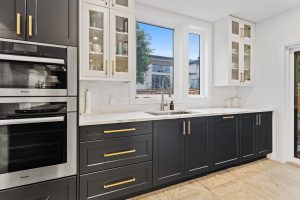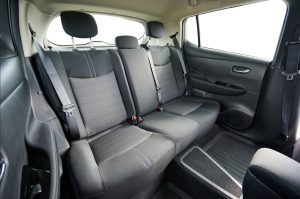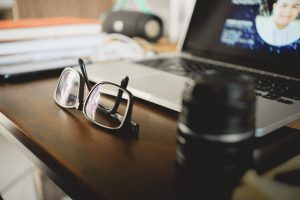If “paint” is the only thing that comes to mind when you hear the word “coatings,” we invite you to think again. Hiding in plain sight, coatings are all around us. They can make words more legible, cars more comfortable, floors more protected and our living environments more beautiful.
Sound like a lot of smoke and mirrors? Let’s start with a simple example:
 Kitchen Cabinets
Kitchen Cabinets
If you’re refinishing cabinets, once any existing paint is removed, you might spot-treat the wood with a thin coat of wood filler to repair scratches. If you’re manufacturing cabinets from scratch, the perfect stain in just the right color precedes a coat of sealer to protect raw wood and help subsequent layers go on smoothly. And lastly, a solvent- or water-based polyurethane varnish adds sheen and durability for years to come.
When you reach for a box of cereal on a shelf in your kitchen, you might not think about the layers of different high-quality coatings that someone used to make the wood into a beautiful cabinet. But just like wooden furniture, so many products are coated to maximize desirable qualities such as strength, aesthetics and sustainability.
Now, let’s consider some of the more unusual coatings you can and can’t see.
 We consistently sit on coated CAR SEATS
We consistently sit on coated CAR SEATS
More than 90% of car seat fabric today is some form of tri-laminate polyester, which is currently the leading option for resisting abrasion and damage from UV rays. And you can bet that your cloth seats include a water- or stain-repellent coating to combat daily wear and tear. Oftentimes, an antimicrobial additive in liquid or powder form is mixed and sprayed on a cloth seat to fight or kill bacteria.
Underneath that layer of poly, what you might not see is a back-coating of resin that can be acrylic, polyurethane or styrene-butadiene rubber (known as SBR) based. This back coating can increase the abrasion resistance of the tri-laminate poly.
Further underneath, the seat fabric is laminated to polyurethane foam by using a flame lamination process.
For leather car seats, after the leather is tanned, it is colored, dyed and treated with chemicals to prepare it for final use. Unlike other types of leather uses, car seats have to be stain resistant, soft and malleable.
The leather then undergoes a coloring process to reach the perfect color and is finished with either a matte or gloss coating.
We stare at coated LCD & LCD SCREENS
This one is more complicated than most, so we’ll keep it simple. When you’re looking at a flat-panel display or liquid-crystal display (LCD), you might see pictures and words, but you are also looking at multiple layers of materials including shape-shifting liquid crystals, a glass filter and light. LED screens include polarized sheets of glass, a backlight and a grid layer of a responsive liquid crystal solution.
In addition to the high-tech insides of these screens, a clear topcoat of sorts is often used to cut unwanted reflection and glare caused by outside light. So-called antireflective (or AR) coatings are applied to surface lenses and screens to heighten visibility.
Regardless of the screen type, most AR coatings work by canceling out specific wavelengths of light. When an anti-reflective coating is exposed to an external light source, it absorbs light in a specific wavelength while reflecting light in a different wavelength. Through this process, it cancels out the two wavelengths so that the light isn’t visible.
We reach for coated HANDRAILS
Metal that has to stand up to weather and regular outdoor use is coated to prevent rust and wear. Handrails are a great example.
To prepare a high-quality steel handrail, it must first be treated with a chemical cleaner to remove every speck of oil, dust or other substance that would prevent paint from sticking to it. Next comes an epoxy or urethane primer for added resistance against corrosion and humidity.
Finally, you’ll find a coating of industrial enamel, epoxy or urethane topcoat.
 We look through coated EYEGLASS LENSES
We look through coated EYEGLASS LENSES
If you’re wearing eyeglasses right now, do you see the glass or do you peer right through it? If you can see well, it might be thanks in part to a coating:
- Eyeglass lenses often have an anti-reflective coating applied to both sides of the glass. This helps cut down on visual interference and lets in the maximum amount of light from the environment.
- A scratch-resistant coating does just what it implies. For those of us who might drop or clean our glasses incorrectly, this coating is a must.
- Exposure to UV light can cause eye damage. UV-protective coatings are applied to reduce this risk.
We walk across coated WOOD FLOORING
When you walk on wood floors, your foot rarely touches raw wood. The process isn’t complex, but what you might not notice are the up to 10 coats of a protective clear coating that go on top of every plank.
Under the coating oftentimes is a stain, accentuating the wood grain as desired.
Bamboo floors require a few more steps. Stacks of harvested bamboo are dried and soaked in glue before being molded into squares and compressed under high pressure to make “bamboo wood” that is dried, cured and cut into planks.
Multiple layers of stain and coating make the planks more beautiful and durable.
We’re simply surrounded by coatings!
Coating technology continues to evolve — to be more sustainable, more durable and more efficient. Accessa works with multiple coating manufacturers who invest in R&D to develop new and better products and processes to stay at the top of their game. It’s exciting to be part of this industry as customer and regulatory demands drive innovation even further.
Connect to an Accessa Coatings Consultant to make your next wood, metal, plastic or other “coated” project more successful. Reach out to us here.
